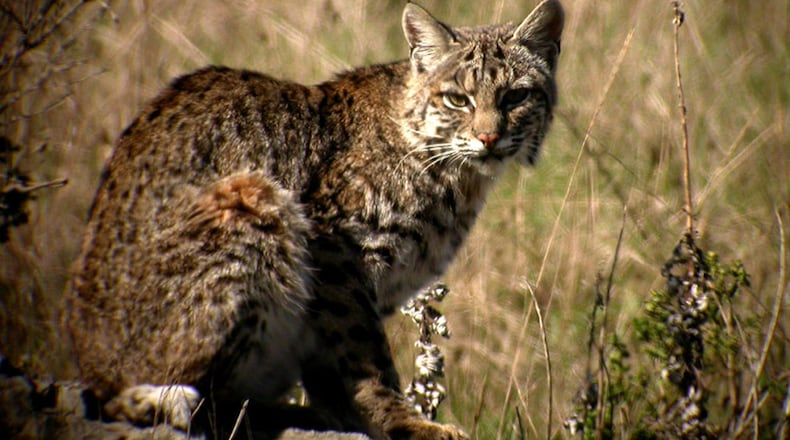Charles Seabrook’s “Wild Georgia” column appears weekly in The Atlanta Journal-Constitution.
I had my first encounter in years the other morning with a bobcat — and it was a sad one. I was driving on U.S. 280 in Wilcox County near the county seat of Abbeville in South Georgia when I spied a large animal lying along the road — an apparent road kill victim.
I assumed it was a hog since that area is known for its wild hog population (Abbeville is the home of the Ocmulgee Wild Hog Festival in May). Curious, I turned around and went back to get a closer look at the creature.
But instead of a wild hog, it was a male bobcat that apparently had been struck by a car during the night. Although it was dead, it was the first bobcat I’ve seen in the wild in many years. Even those previous sightings were fleeting, not lasting more than a few seconds.
It saddened me to see such a beautiful animal lying there, with its characteristic short “bobbed” tail, yellowish brown spotted fur and graceful muscular body. Although common in upland forests, swamps and other habitats throughout Georgia, the bobcat’s extreme shyness, solitude and reclusiveness, and the fact that it hunts and roams mostly at night, make it seldom seen. (Bobcats occasionally are detected at night, though, by wildlife cameras.)
Good climbers and fierce hunters, bobcats can kill prey much bigger than themselves, but usually eat rabbits, birds, mice, squirrels, and other smaller game.
Perhaps because of its elusiveness and being the only native wild cat still roaming wild in Georgia, the bobcat inspires awe and mystery among people. A fully grown bobcat may be two to three times bigger than the average house cat and weigh more than 40 pounds.
Bobcats’ breeding season commences this month and runs through March, so the animals may be roaming more than usual during the next few months. About two months from now, the year’s first bobcat litters — an average of 2-3 kittens each — will be born in dens in hollow logs or rocky crevices.
IN THE SKY: From David Dundee, Tellus Science Museum astronomer: The moon will be new by Friday. Venus is low in the west just after dark and sets about two hours later. Mars is low in the east about two hours before dawn. Jupiter is in the east an hour before sunrise. Mercury and Saturn are not easily seen right now
About the Author
Keep Reading
The Latest
Featured


